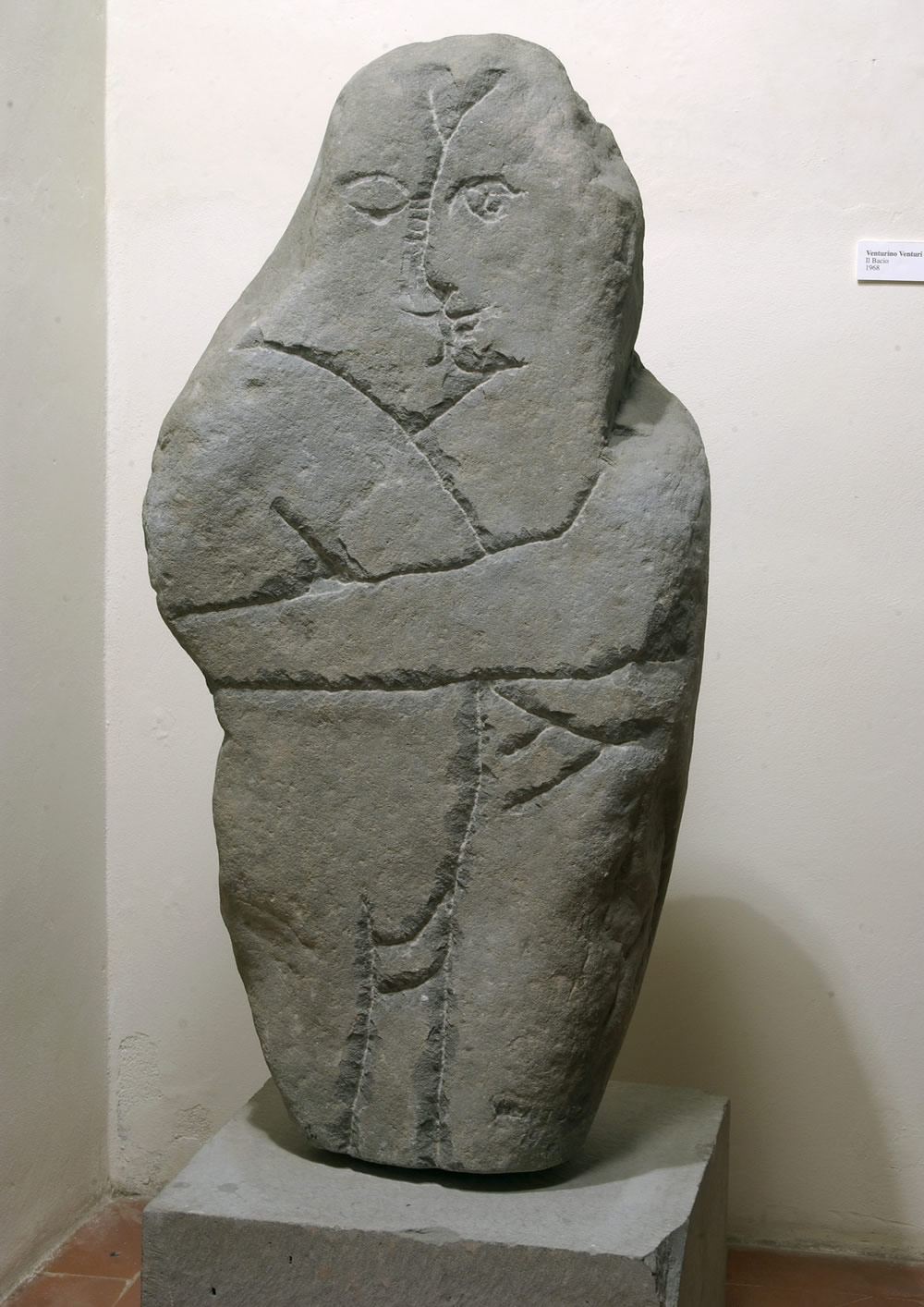Venturino Venturi was born in Loro Ciuffenna and relocated at a young age to France and then to Luxembourg with his family. After completing a technical high school (1934), he returned to Italy. In Florence, he attended the Art Institute of Porta Romana and then the Academy of Fine Arts. In 1940, he was called to arms. In 1947, he left Florence heading to Milan and began working in the art world, receiving commissions both in Italy and across Europe. In 1952, he was assigned to a post as a teacher at the art school in Pietrasanta. He exhibited at major Italian art events, including the Venice Art Biennale in 1952, several editions of the Rome Quadriennale (1956, 1960, 1973), the Sculpture Biennale of Carrara (1962, 1965), and the La Nuova Figurazione International Exhibition. He died in Loro Ciuffenna in 2002.

– title: Il bacio
– date: 1968
– medium: sculpture, Pietra serena (blue-grey sandstone)
– size: 110x55x30 cm
– description: The work donated by Venturino Venturi to the Municipal Collection of Contemporary Art of San Giovanni Valdarno represents two persons, a man and a woman, standing tightly together in a tender embrace culminating in a kiss. This sculpture features some of the distinctive elements of Venturi’s signature style – love for the consistency of the material and the action of the sculptor reduced to a minimum – elements that the artist honed with his daily practice. The subject is another important trait of the work: two lovers, two human beings, the very heart of the artist’s poetics. From a formal point of view, the sense of monumentality transpiring from this work underlines the pure essence of Venturi as a sculptor, who exalts the material (Pietra serena) while honouring its expressive potential, and maintaining its monolithic shape onto which the two human figures are engraved. Lines conform to the forms of the large stone, following their movement and tracing a basic shape that draws inspiration from the artist’s love for the history of art. Venturi’s art is indeed grounded on and draws from the acclaimed Florentine season of Renaissance, although this specific work brings to mind Romanesque sculpture and a certain leaning for Primitivism, which was popular in the early 20th century and which never leads to complete abstraction in Venturi’s oeuvre.